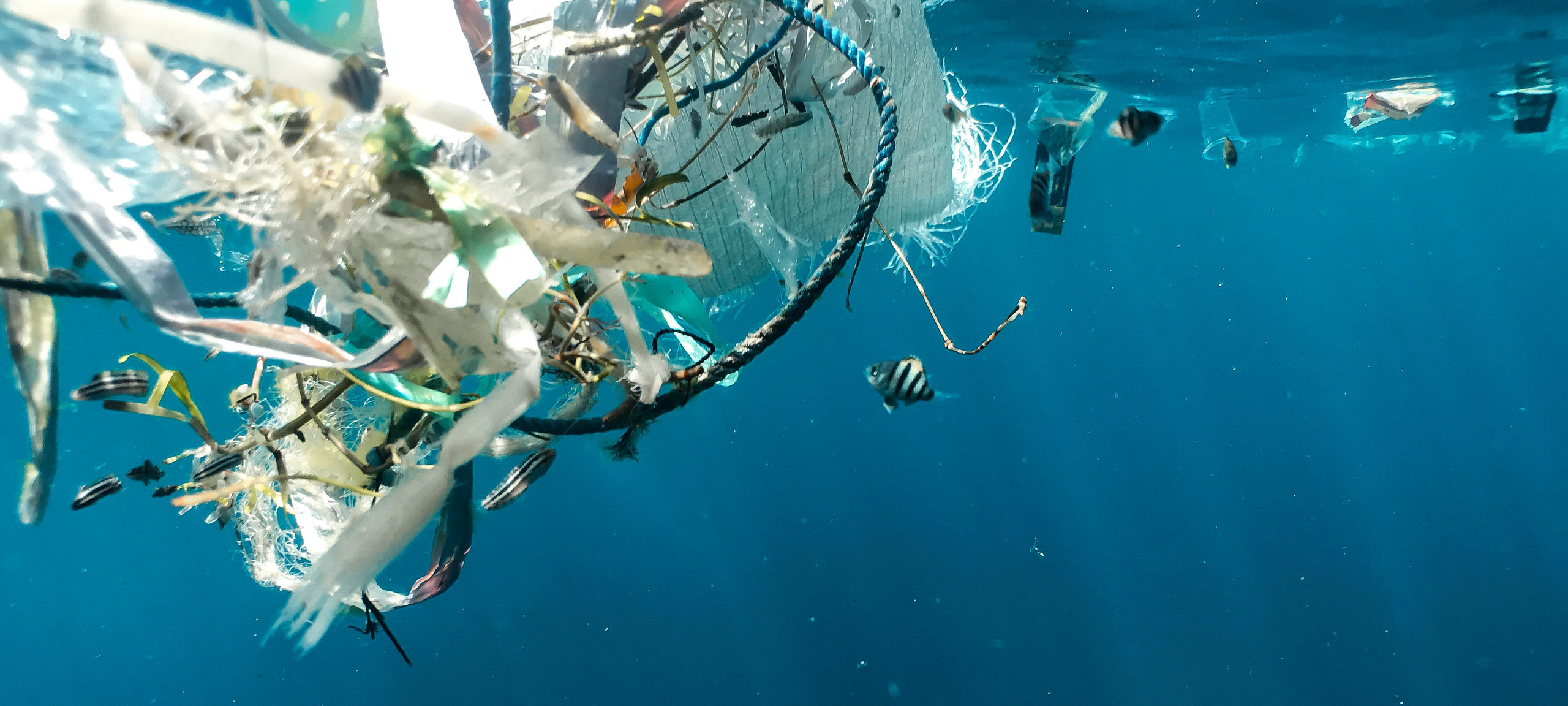
© Naja Bertolt Jensen / Unsplash
WORLD OCEAN REVIEW: Pollution of the oceans
Seas brimming with litter and pollutants
Whether deliberately discharged or unintentionally introduced, plastic waste, pharmaceuticals, toxic heavy metals, insecticides and other chemicals have found their way to every corner of the oceans. The consequences are catastrophic and often lethal, especially for marine organisms. The only good news is that international prohibitions of some pollutants are beginning to have an effect. Without radical changes in industry and commerce, however, the pollution crisis in the oceans cannot be overcome.
Not only does the world ocean play a major role in the climate and species-diversity crises of the Earth. It is also affected by a third global environmental crisis: the widespread pollution of terrestrial and marine areas. Every year as much as 400 million tonnes of pollutants end up in lakes and rivers, and ultimately in the seas. These include thousands of different chemicals, nutrients, plastics and other synthetic products, toxic heavy metals, pharmaceuticals, cosmetic products, pathogens, radioactive substances and much more.
In eight of ten cases, pollutants identified in the sea originate from terrestrial sources.
World Ocean Review
Fig.: Eighty per cent of the pollutants in the ocean originate from onshore sources. Experts distinguish between point sources and non-point sources. The former category includes factories or water treatment plants that discharge their effluent directly into the sea. The latter refers to those sources that discharge pollutants into the ocean by more indirect pathways.
In eight of ten cases, pollutants identified in the sea originate from terrestrial sources. As industrial or household waste, they are either discharged directly into the water, escape from poorly functioning wastewater treatment plants, are washed from the fields and streets by rainfall from above, or are leached from landfills and garbage dumps into subterranean water channels or streams. Litter and plastics are also carried to the sea by the wind. The remaining input of pollution occurs directly at sea, as a result of fishing and aquaculture or from shipping.
Fig.: Unlike the insecticide DDT, harmful radionuclides such as caesium-137 have limited biomagnification in marine food webs.
Pollutants especially hazardous for marine biotic communities are those that are longlived and that accumulate in the food webs.
World Ocean Review
Winds and ocean currents transport garbage and pollutants to the most inaccessible regions of the world’s oceans. Evidence of the pollution can be found on remote islands, in the polar sea ice and in deep ocean trenches. Pollutants especially hazardous for marine biotic communities are those that are longlived and that accumulate in the food webs. These are characteristic, for example, of the group of persistent organic pollutants (POPs), which includes many pesticides and industrial chemicals.
Fig.: Because plastics are slow to release their toxins and additives into the environment, their full harmful effects are delayed. Researchers therefore speak of a toxic debt that we humans incur with the use of petroleum-based plastics.
Much of the waste in the sea only degrades slowly. Plastic products or nylon fishing lines are particularly durable. Many pieces of plastic break down into ever smaller pieces. However, it may take centuries for these to degrade completely (estimated values).
The consequences of contamination are manifold and are distinguished according to the species affected and pollutant concerned. Known environmental pollutants cause diseases such as cancer, evoke deformities and behavioural changes in marine organisms, impair reproduction in affected species and can cause death in contaminated individuals. As a rule, predators at the highest trophic levels are especially impacted by environmental pollutants. These include sharks, toothed whales and seals. Animals that come into contact with plastic waste are in danger of being trapped, or of ingesting the plastic and starving with a full stomach. At least 700 animal species have now been identified for which plastic in the ocean can be a deadly hazard.
Fig.: Microplastic particles now migrate in a large cycle through the individual components of the earth system and can therefore be found everywhere - in the air, in the soil, in the water and in all food webs.
From: World Ocean Review No. 7, 2021, Hamburg.
The international community is attempting to limit the input of pollutants into the seas through a variety of international agreements as well as transregional and national regulations. The prohibition of selected persistent organic pollutants by the Stockholm Convention, for example, is delivering results. The concentrations of these pollutants in the sea are declining. But in many other cases, politicians and scientists are facing the problem that regulatory authorities are not always fully informed about the chemicals that are used in popular products, or about the impacts these ingredients would have should they someday end up in the sea. In many cases, the risk analyses required for a ban on dangerous substances are only possible after excessive quantities of them have already been introduced into the ocean and researchers are able to demonstrate the links between pollutant input and ecosystem destruction.
An end to the crisis of marine pollution will not be possible until a large proportion of the households and businesses around the world are connected to functioning sewage and solid-waste management systems, until substances toxic to the environment and carbonbased plastics are replaced by biodegradable alternatives, and the use of chemicals and plastics is limited to closed-loop systems.
Published with the kind permission of maribus gGmbH.
mareverlag founded the non-profit organisation maribus in 2008 to raise public awareness of marine science and thus contribute to more effective marine protection. The focus is not on commercial considerations, but solely on raising awareness of marine issues. The World Ocean Review is a unique publication on the state of our oceans, reflecting the current state of science. All WOR issues can be ordered free of charge or downloaded as PDF files: https://worldoceanreview.com/en/
© maribus gGmbH
Acquire article rights
